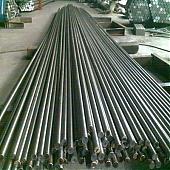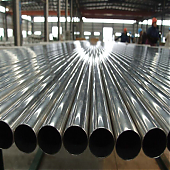How Galvanized Pipes Are Made

How Galvanized Pipes Are Made
Galvanized pipes, also known as galvanized steel pipes, are widely used in various industries due to their excellent corrosion resistance and durability. They are typically divided into hot-dip galvanizing and electro-galvanizing types, with hot-dip galvanizing being more common for its superior performance.
Raw Material Preparation
The raw materials for galvanized pipes are usually steel strips or coils. These materials need to be carefully selected to ensure they meet the required quality standards for strength, composition, and surface condition. The steel strips or coils are then cut into appropriate lengths according to the desired pipe specifications.
Surface Cleaning
Before the galvanizing process, the surface of the steel must be thoroughly cleaned to remove any impurities, oxide layers, or grease. This is crucial as any contaminants on the surface can interfere with the adhesion of the zinc coating. The cleaning process involves several steps:
- Degreasing: The steel is first treated with a degreasing agent to remove any oil or grease residues. This can be done using chemical solvents or alkaline solutions.
- Rinsing: After degreasing, the steel is rinsed with water to remove any remaining degreasing agent.
- Pickling: The steel is then pickled in an acid solution, typically hydrochloric acid or sulfuric acid, to remove the iron oxide layer from the surface. This step is essential for creating a clean and reactive surface for the subsequent galvanizing process.
- Cleaning: After pickling, the steel is cleaned again to remove any residual acid. This can be done by rinsing with water and then treating with a neutralizing agent.
Welding (for Welded Pipes)
If the final product is to be a welded galvanized pipe, the cleaned steel strips are then formed into a continuous tube using a series of rollers. The edges of the tube are brought together and welded using high-frequency electrical energy. This creates a strong and continuous seam that is then cooled and shaped into the desired pipe diameter and wall thickness.
Hot-Dip Galvanizing
Once the steel pipe is formed, it is ready for the hot-dip galvanizing process. The pipe is immersed in a bath of molten zinc at a temperature of around 450°C. During this process, a complex physical and chemical reaction occurs between the hot zinc and the iron substrate of the steel pipe. This reaction forms a tightly structured corrosion-resistant zinc-iron alloy layer, which combines with the pure zinc layer and the steel pipe matrix.
The advantages of hot-dip galvanizing are numerous. The zinc coating is uniform, with strong adhesion to the steel substrate, and it provides long-lasting corrosion protection. The thickness of the zinc coating can vary depending on the specific requirements of the application, but it typically ranges from 30 to 600 grams per square meter.
Post-Galvanizing Treatment
After the hot-dip galvanizing process, the pipe undergoes a series of post-galvanizing treatments to improve its appearance and performance:
- Inside and Outside Blowing: The pipe is blown with compressed air to remove any excess zinc from the inside and outside surfaces.
- Cooling: The pipe is then cooled rapidly to room temperature to solidify the zinc coating.
- Passivation and Rinsing: The pipe is treated with a passivation solution to form a thin, protective oxide layer on the zinc surface. This helps to improve the corrosion resistance of the zinc coating and gives it a more uniform appearance. After passivation, the pipe is rinsed with water to remove any remaining passivation solution.
Finishing Processes
The final step in the production of galvanized pipes is a series of finishing processes to meet the specific requirements of the customers. These processes may include:
- Cutting: The pipe is cut to the desired length using cutting machines.
- Threading: If required, the ends of the pipe are threaded to allow for easy connection with other pipes or fittings.
- Straightening: The pipe is straightened to ensure it meets the required dimensional tolerances.
- Inspection: The finished pipe is inspected for quality, including checking the thickness and uniformity of the zinc coating, the presence of any defects such as pits or blisters, and the dimensional accuracy of the pipe.
- Typing Logo: The pipe is marked with the manufacturer's logo, specifications, and other relevant information.
- Package Storage and Transportation: The finished pipes are then packaged, stored, and transported to the customers.
Galvanized pipes are an essential component in many industries, providing reliable and durable solutions for a wide range of applications. The production process of galvanized pipes is a complex and precise one, involving several critical steps to ensure the quality and performance of the final product. From raw material preparation to surface cleaning, welding (if applicable), hot-dip galvanizing, post-galvanizing treatment, and finishing processes, each step plays a crucial role in the production of high-quality galvanized pipes.
Interested in learning more about our galvanized pipes or placing an order? Don’t hesitate to reach out to us at sales@jawaysteel.com. Our experienced sales team will be happy to provide you with detailed information, quotations, and assistance throughout the purchasing process.
Related Products


